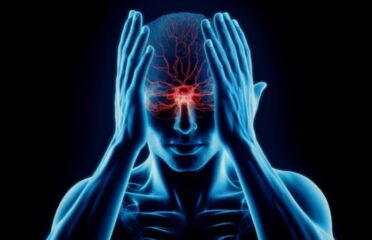Cerebral Hypoxia
Overview

Did you know that our brain needs a constant supply of oxygen to function properly?
When there is not enough oxygen getting to the brain, it's known as cerebral hypoxia.
This condition affects the largest parts of the brain, which are called the cerebral hemispheres. It can happen due to various reasons like drowning, choking, or even high altitudes.
Cerebral hypoxia can cause severe damage to the brain and can lead to long-term consequences like memory loss, difficulty in speaking and moving, and even coma.
So, it's crucial to take care of ourselves and ensure that our brain gets enough oxygen to function correctly. Stay safe, healthy, and don't forget to breathe!
Symptoms
• Disorientation and slurred speech may be evident, indicating confusion and difficulty articulating clearly.
• Breathing abnormalities, including rapid, shallow breathing, or cessation of breathing, may occur.
• Bluish or grayish skin and lips may develop due to oxygen deprivation.
• Involuntary muscle movements such as convulsions or seizures may occur, along with dilated pupils.
• The individual may become unresponsive, failing to react to external stimuli or attempts at communication.
• Prompt medical attention is crucial when observing these symptoms to address the underlying cause of cerebral hypoxia and prevent further complications.
Causes & Risks
• Cardiac Arrest or Heart Problems: Impaired blood pumping affects oxygen delivery to the brain.
• Respiratory Conditions: Disorders like asthma hinder normal breathing, reducing brain oxygenation.
• Stroke: Both ischemic and hemorrhagic strokes disrupt brain blood flow, causing hypoxia.
• Carbon Monoxide Poisoning: Inhalation of CO gas hampers oxygen transport, leading to cerebral hypoxia.
• Severe Anemia: Decreased red blood cell count limits oxygen supply, contributing to cerebral hypoxia.
• High Altitude: Reduced atmospheric oxygen at high elevations increases the risk of cerebral hypoxia.
Test & Diagnosis
• When a healthcare provider suspects a brain injury, they may order a battery of tests to determine the severity of the injury and plan appropriate treatment. These tests include:
• Angiography: A diagnostic test that uses X-rays and a special dye to evaluate blood flow to the brain and detect abnormalities in the blood vessels.
• CT scan or MRI: These imaging tests help to identify signs of stroke, bleeding in the brain, brain swelling, or other trauma. CT scan uses X-rays, while MRI uses a magnetic field and radio waves.
• Electroencephalogram (EEG): This test measures the electrical activity in the brain and helps to diagnose conditions such as seizures, epilepsy, and head injuries.
• Evoked potentials test: It assesses the brain's response to sensory stimuli such as touch, sight or sound. It helps in diagnosing conditions such as multiple sclerosis, spinal cord injuries, and brain injuries.
Treatment
• Cerebral Hypoxia Overview: Critical medical condition stemming from inadequate oxygen supply to the brain, necessitating urgent attention.
• Immediate Action Required: Suspected cases mandate calling 911 promptly to initiate swift medical intervention.
• Emergency Response Measures: Healthcare providers may administer supplemental oxygen, perform CPR, or utilize ventilators to restore oxygen flow.
• Addressing Underlying Causes: Root causes like heart attacks or strokes are treated promptly to prevent further brain damage.
• Impact on Recovery: Timely intervention significantly enhances the chances of a successful recovery.
• Importance of Promptness: Rapid response crucial in minimizing potential long-term neurological consequences.
Living With
When a person experiences cerebral hypoxia, it can be quite challenging for them as the condition can trigger various distressing symptoms that can even prove fatal.
Some of these symptoms may include seizures, loss of consciousness, shallow or stopped breathing, or signs of a heart attack or stroke.
Cerebral hypoxia occurs when the brain does not receive enough oxygen, which can be caused by several factors, such as choking, drowning, or cardiac arrest.
In case you or someone you know experiences any symptoms of cerebral hypoxia, seeking immediate medical attention is crucial to prevent any further damage and potentially save a life.
Complications
• Severe Consequences: Oxygen deprivation can result in severe outcomes like coma and seizures.
• Brain Vulnerability: The brain, overseeing bodily functions, is highly susceptible to oxygen deprivation.
• Rapid Brain Death: Brain death can occur within 10 minutes without oxygen, leading to no brain activity.
• Immediate Intervention: Urgent measures, like mechanical ventilation, are vital to sustain life.
• Preserving Vital Functions: Mechanical ventilation helps maintain essential bodily functions until further medical aid is available.
• Urgency of Medical Attention: Swift medical assistance is imperative to avert irreversible damage and potential loss of life.

The Content is not intended to be a substitute for professional medical advice, diagnosis, or treatment. Always seek the advice of your physician or other qualified health provider with any questions you may have regarding a medical condition.
Know more about
Our Healthcare Planner
Personal Health Planner at BNC is a support staff who listens to your concerns and connects you with a Neuro Care provider. They prioritize your needs and create a trusting relationship between you and the provider.
Three fundamental values we can assure you:
1. Personalized Healthcare.
2. Most advanced robotic therapies
3. Transparent pricing





